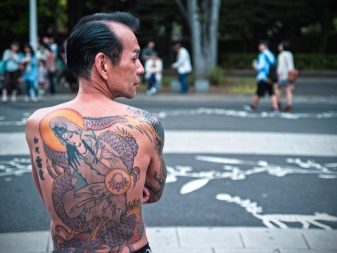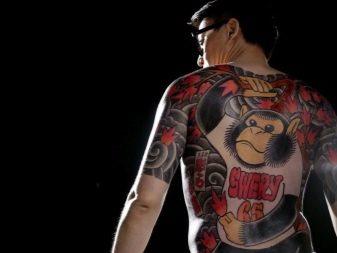Varieties of Yakuza tattoos and their meaning

The Yakuza is one of the most dangerous crime syndicates in the world. The clan structure of Japanese mafiosi is based on the patriarchal lifestyle and existing traditions. A separate place in the symbolism of this group is occupied by tattoos. We will talk about them in our review.
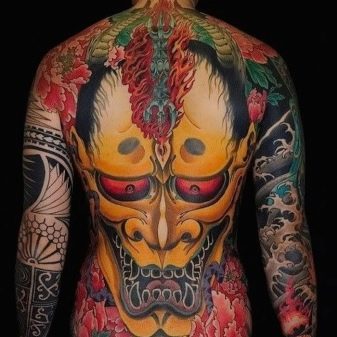

Peculiarities
Let's start with history. She is quite banal and not too romantic. In ancient times (according to some sources, in the 8th century), the Japanese government decided to stuff tattoos on criminals. They were applied to areas open to the public. Thus, others could learn about a person's dark past.
In those years, for any criminal offense, a closed ring was impaled on the arm (just above the elbow). In later periods, the yakuza began to depict stylized analogs of a bracelet in the form of a snake coiled into rings on the body. Moreover, each of her zigzags was an indication of the criminal experience of the owner of the tattoo.
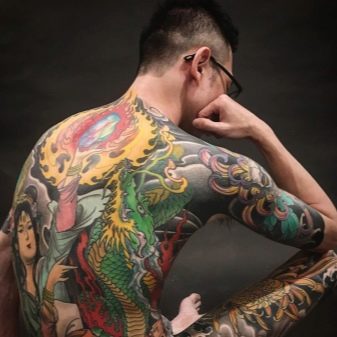
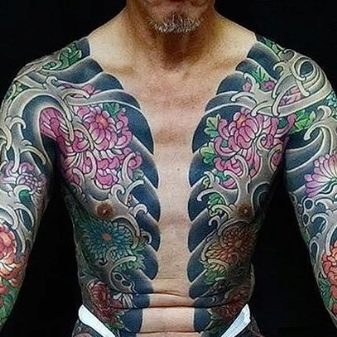
The organization itself was formed in the XV-XVII centuries. It was then that her rituals and rules were formed. At that time, vagabonds who lost their property samurai, as well as ronins and other outcasts of society, joined the mafia. The traditions of Japanese warriors became the basis of the structure of the mafia group, and patriarchal values also played an important role in the organization. Mafia members abandoned relatives for the sake of a new family. At the same time, the place of each mafiosi was strictly regulated in the hierarchy, and impeccable obedience to the head of the clan, exceptional loyalty and devotion to other members of the community was required from him. This situation has remained in our days.
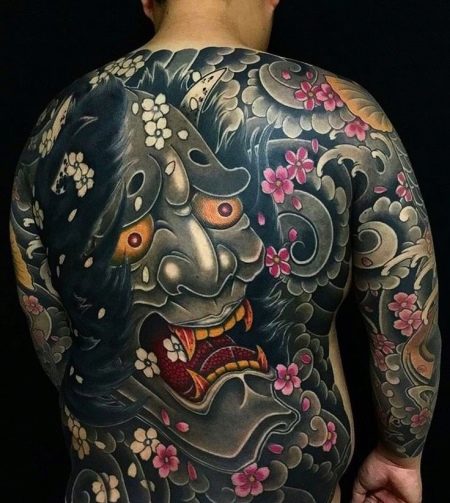
Mafiosi have developed a whole ideological code by analogy with the samurai bushido. Its main provisions require the following:
- when committing any actions, remember about the duty of your "family";
- provide all kinds of assistance and all-round support to other members of the syndicate;
- in any case, act for the benefit of their loved ones;
- under no circumstances incite enmity and discord within the members of the same group.
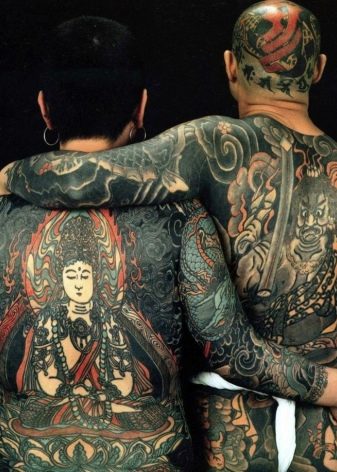
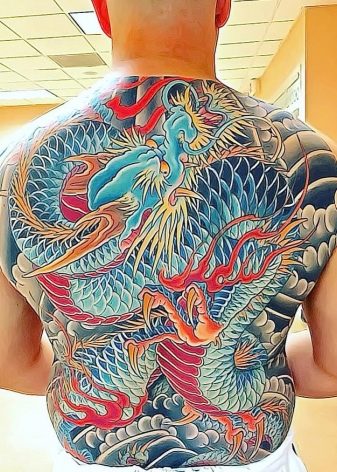
Members of the modern yakuza are subordinate to the heads of their clans. Not a single case has been registered when conspiracies were organized against them, there is no information even about the usual facts of disobedience. The Yakuza are listed in the Guinness Book of Records as the most authoritative and influential criminals in the world. It is known that even the official authorities support them if it helps to maintain order.
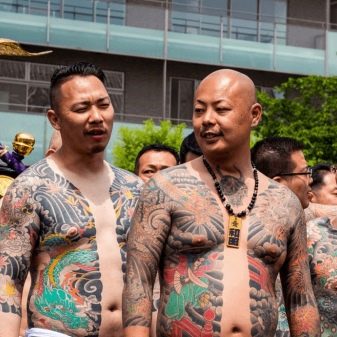
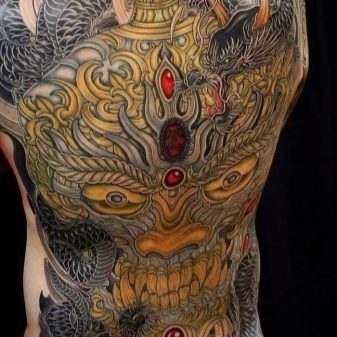
Throughout history, representatives of mafia groups have tried to emphasize their belonging to the criminal community. One of the main symbols of the Japanese yakuza was badges with the image of the clan emblem, and tattoos performed a similar function. Tattoos have become a distinctive feature of the Japanese yakuza, and painting all over their bodies turned out to be a certain symbol of their departure from the society of law-abiding citizens. From the moment a new drawing is stuffed on the body, the criminal leaves behind his back all his past.
It is known that in the past, the owners of such tattoos were not even allowed to enter the baths and other public places.
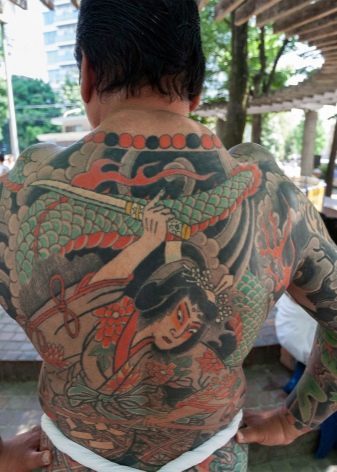
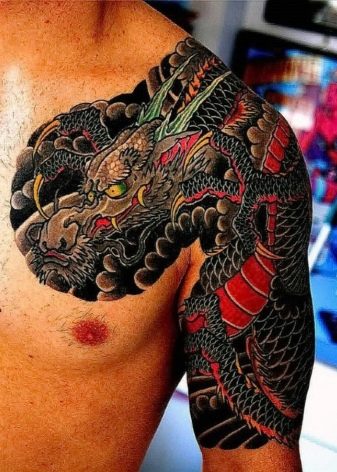
Initially, tattoos were stuffed with a bamboo stick. Technology has leaped forward today, but the yakuza still use the same tools. Given the large volume of tattoos, the process of creating them takes a long time. Therefore, when using sticks, the pain is stronger, blood loss is higher than when using a typewriter. Not everyone can endure such an execution. With their tattoos, the members of the group show that they are not afraid of either pain or difficulties, and for the sake of an idea they are ready to endure any trials. However, despite the primitive tools of labor, professional yakuza tattooists leave real works of art on the body.
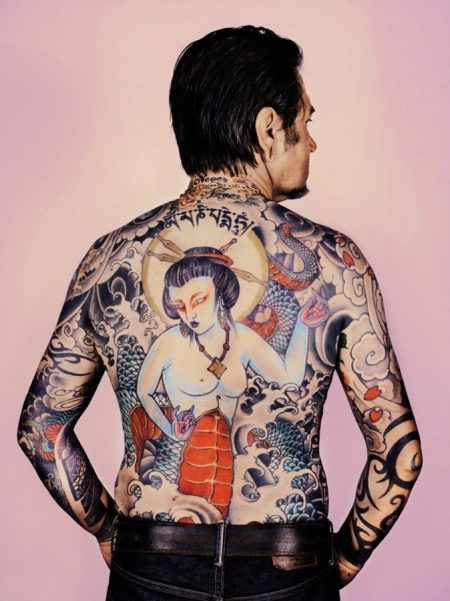
Each tattoo has its own meaning. It reflects the personality characteristics of a person, and also indicates his place in the crime family. Individual drawings are combined into large plots that are stuffed onto the body throughout life. The role of the members of the crime syndicate belongs to men. History knows only a few cases when power in the clan passed into female hands: these were extremely cruel and desperate criminals. For the most part, such tattoos are stuffed by the spouses of mafiosi: through them they show their dedication to their spouse, their willingness to endure any pain and hardship for him.
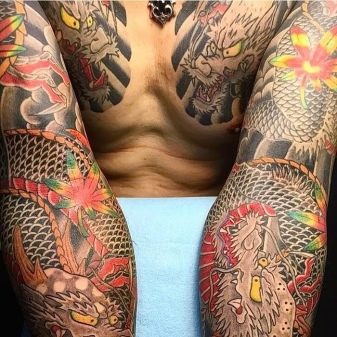
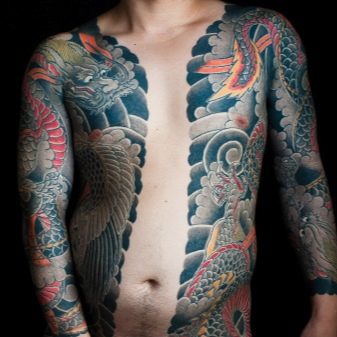
The creation of male tattoos on the body is a kind of ritual, because immediately after the tattoo is applied, the yakuza goes through a rite of passage. In this case, a person is completely excluded from the social life of a normal society and automatically joins a closed criminal gang.
From the moment of tattooing, he has no right to enter into a relationship with a woman who comes from an ordinary family. This person cannot take a job with an organization that is not under the control of his crime family.
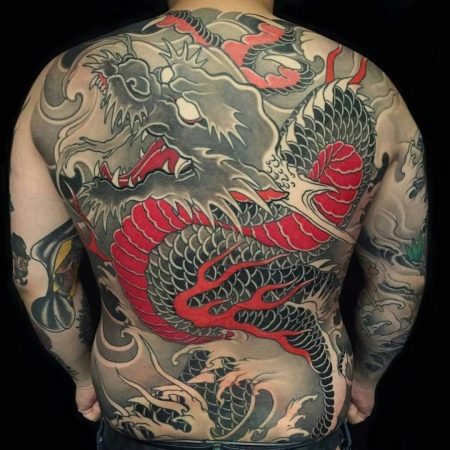
Variety of tattoos and sketches
Each Yakuza tattoo is symbolic. Let's consider the most popular solutions.
Ryu, Tora
Everything is simple here: the image of a tiger or dragon on the body is a sign of power. Such tattoos are made by the heads of groups and criminal authorities of various levels. The image of a tiger for the yakuza is the personification of courage, power and exclusivity. Additionally, in Japanese mythology, it is given the meaning of a talisman against demons, troubles and severe ailments.
Dragons in Japan are considered the protectors of humans. When applied to the yakuza, they are associated with courage, strength and wisdom. Tattoos with a dragon are pierced on the body by the leaders of the "family".In this way, they demonstrate their patronage to all criminals who are part of the clan.
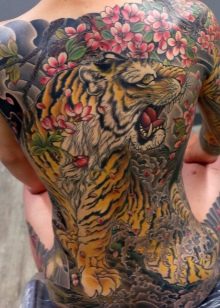
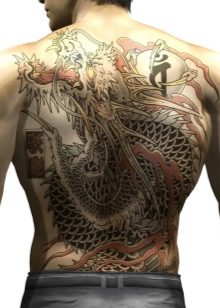
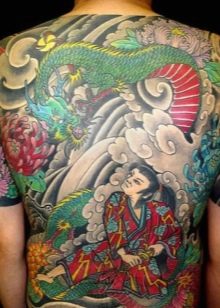
Kintaro
This plot represents the image of a strong man who entered into a battle with a sea dragon or a huge carp. Such a tattoo is associated with a person's courage, means his physical strength and endurance. In the yakuza hierarchy, kintaro is traditionally made to melee fighters.
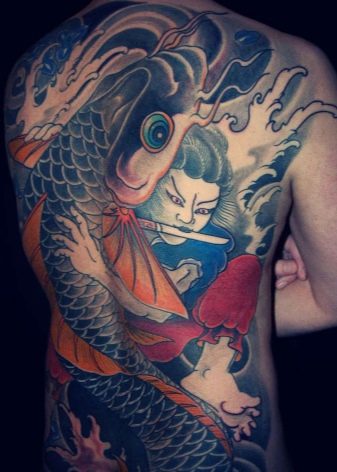

Teu Jun
A young man with a sharp knife in his teeth. Such a drawing indicates a person who flawlessly wields a cold weapon. Sometimes, instead of a man, an image of a demon or a woman is stuffed, but the knife in the mouth remains an invariable attribute of the tattoo.
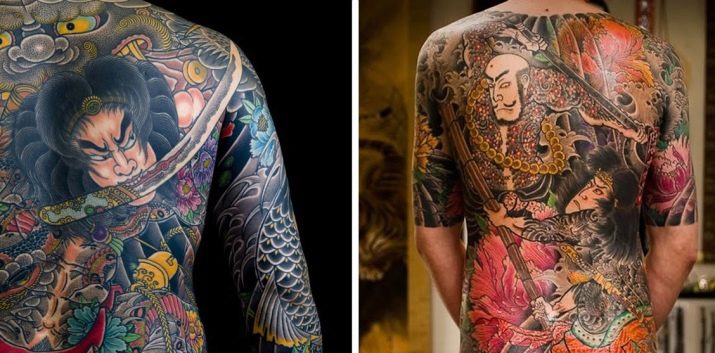
Hickashi
This is the so-called firefighter. A similar tattoo is stuffed by members of the rapid response team. These are punishers, whose task is to arrive at the scene of the conflict on the first call and resolve the situation, often with the use of force.
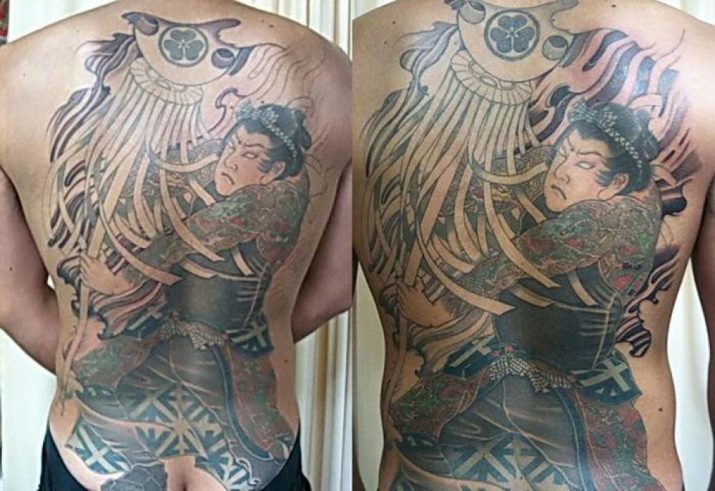
Fudo Meo
This tattoo depicts a guardian god. He holds a sword in one hand, a rope in the other. It is considered the patron saint of merchants. When applied to the yakuza, such images point to smugglers and drug dealers.
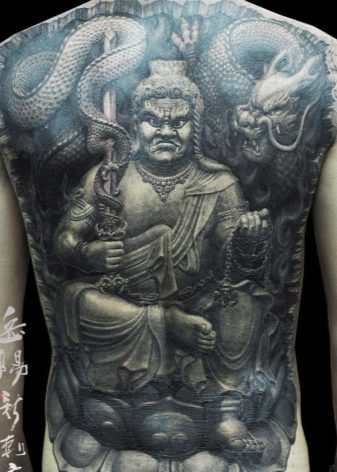
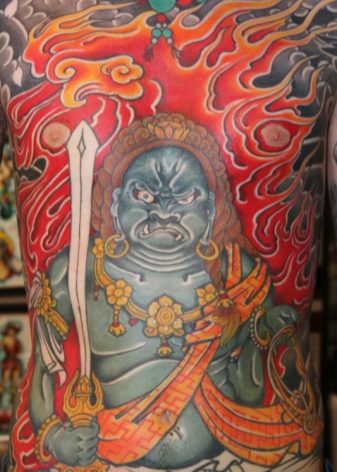
Hagoromo-tenne
The image of the girl, the priestess of love. In the criminal community, such a sign on the body indicates trafficking in women, the opening of brothels and work with street prostitutes.
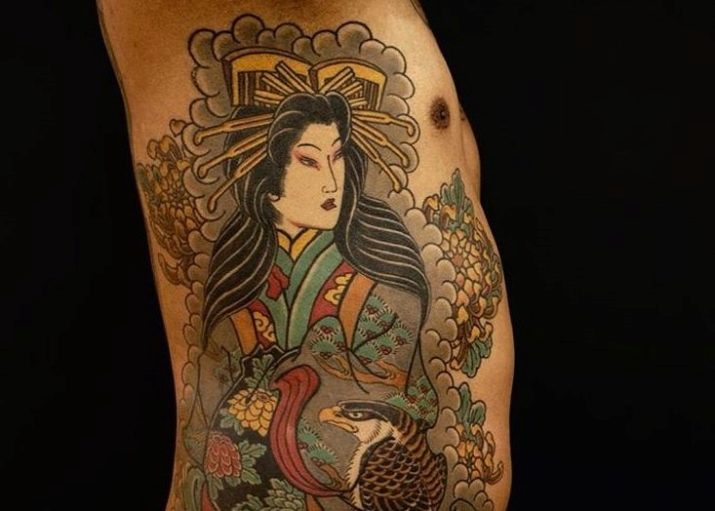
They
In Japanese mythology, they are a cruel, aggressive, humanoid monster, reminiscent of Christian demons. It feeds on human flesh. Tattoos depicting this creature on the body of a member of the Japanese mafia group indicate the executioner: the owners of this sign are engaged in the murder of unwanted people. Also, such a symbol is common among debt collectors.


In addition, other symbols can be found on the body of the yakuza.
- Akugenta. The image of the son of the emperor and an ordinary commoner who managed to become a famous warrior. Such tattoos are stuffed with the most cruel thugs.
- Kyumonryu shishin. A warrior, according to legends, he was born with a tattoo of nine dragons. The owner of such a tattoo is considered a born yakuza and a fierce fighter.
- Karadzishi. Image of the mythical dog Pho. According to legend, she brings good luck. This is why it is stuffed by the members of the syndicate in charge of gambling.
- Koi carp. His image is associated with luck and success. Legends say that this fish is able to climb a waterfall, so a tattoo with such a creature can indicate the strength and fortitude of its owner. With this pattern on the body of the yakuza, they say that they managed to go through difficult life trials.
- Namakubi. This tattoo depicts a severed head. It shows that its owner is not afraid of anything, he does not know the feeling of fear. He possesses fearlessness and courage. The appearance of such a tattoo is rooted in the ancient ritual of offering military commanders the severed heads of the enemy.


Other additional characters can also be woven into the plot composition:
- sakura - a sign of the protection of higher powers;
- maple symbolizes a stubborn struggle and an ardent spirit;
- peony indicates secrecy, sabotage and espionage;
- the cat is inextricably linked with cunning, cunning, power and wealth.
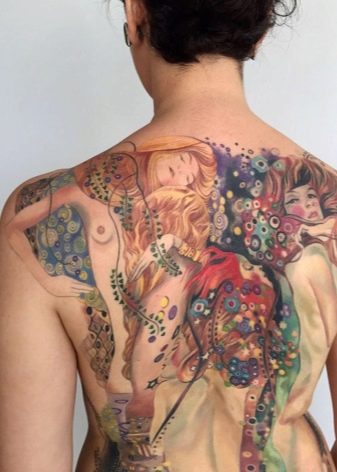
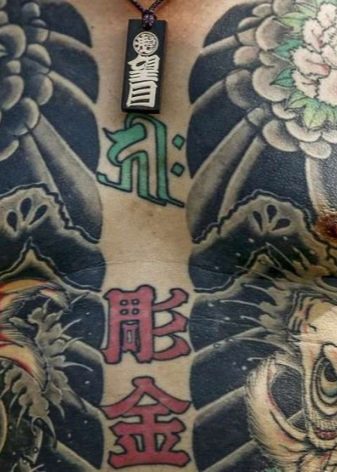
Accommodation options
A distinctive feature of the Japanese Yakuza tattoo is that it covers the entire body. Of course, the drawings are not filled immediately, but gradually. When a person is initiated into a crime syndicate, the sleeve is first filled, then the back. Further, the chest and abdomen are progressively covered with body painting. The legs are painted last.
In some cases, a free zone is left in the center of the composition: for the yakuza, it symbolizes restraint. In modern tradition, the Japanese-style sleeve is very popular. The oldest fighters, who have gone through many criminal cases, sometimes do not have enough space. Then with tattoos they cover not only the torso, but also the neck and head.
